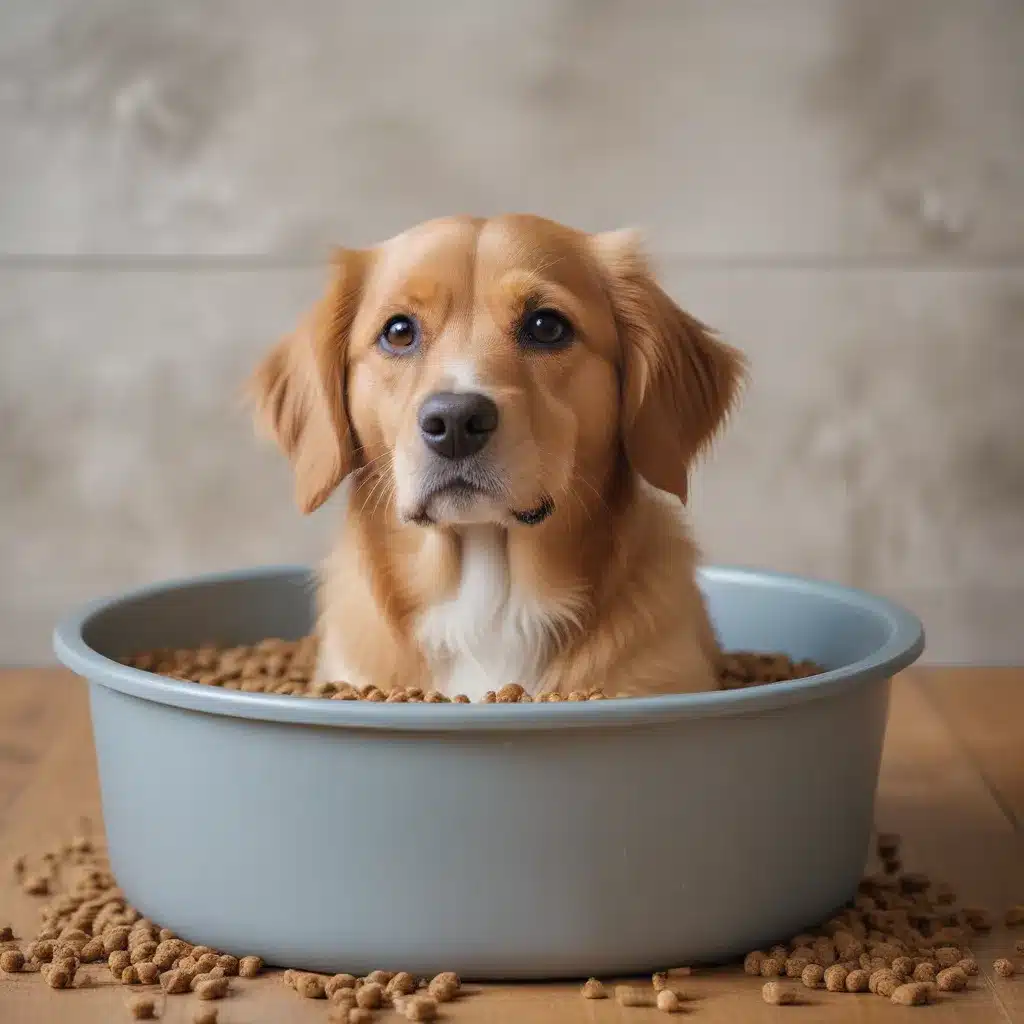
To Soak or Not to Soak? The Kibble Conundrum
As a devoted dog parent, I’ve always wondered about the benefits (or drawbacks) of soaking my pup’s dry kibble. Is it really worth the extra effort, or am I just creating more work for myself? Well, fellow dog lovers, the age-old question of “should you soak your dog’s kibble?” is one I’ve been dying to dive into.
After all, our canine companions deserve the best, and if a little water can make their mealtime more enjoyable (and potentially healthier), I’m all ears. So, let’s dive into what the vets have to say about this kibble conundrum, shall we?
The Dry Versus Wet Debate
When it comes to dog food, the age-old debate of dry versus wet rages on. And to be honest, I can see the merits of both sides. Dry kibble is undoubtedly the more convenient option – it’s easy to store, less messy, and generally more cost-effective. As one expert from Arden Grange explains, “Dry food is easy to store once a pack is opened, less ‘smelly’ to us humans and generally more economical.”
But the real kicker? Dry food is actually more calorically dense than its wet counterpart. “This is because it is more calorific due to its much lower moisture content. Dry feed portions are subsequently smaller than commercial wet food and nutrients can be packed into kibble without the diluting effects of water.”
So in theory, your pup could be getting all the same great nutrients in a smaller serving size. Sounds like a win-win, right? Well, not so fast.
The Case for Soaked Kibble
While dry food may have its advantages, some pet parents swear by the benefits of soaking their dog’s kibble. And frankly, I can see why. As the Arden Grange expert notes, “A pet may require several cans or trays a day to provide the same nutrition as the recommended ‘grams per day’ in kibble. Soaked dry food may therefore be a more suitable option for dogs and cats that are unable to tolerate large volumes of food very well.”
Plus, let’s be real – not every dog is a champion chewer. As the Whole Dog Journal points out, “Mostly, a few of the kibbles get crunched, and more likely get swallowed intact.” Yikes! That can’t be good for their digestive system.
Soaking the kibble helps to pre-moisten the food, making it easier for our less enthusiastic eaters to chew and digest. And let’s not forget about the satiety factor. “If their meal is full of water, it definitely increases satiety – that sensation of fullness. They quit walking around the kitchen looking unsatisfied after their meals when their food is soaked.”
Potential Downsides to Soaked Kibble
Of course, as with most things in life, there are a few potential drawbacks to soaking your dog’s kibble that are worth considering. For starters, the Arden Grange expert cautions that “if soaking your pet’s food, make sure it isn’t steeped for too long (up to half an hour is generally fine) as fermentation can occur.”
Yikes, fermentation? No, thank you! And let’s not forget about those pesky flies. “The food is also attractive to flies (especially in the warmer weather) so keep it covered whilst it’s being prepared.” Ugh, talk about an unwanted dinner guest.
Finally, the Arden Grange expert notes that soaked food “is therefore not ideal for dogs and cats who like to ‘free feed’ or go back and forth to their bowl to eat rather than finish a meal soon after it has been given.”
So if your pup is a grazer, you might want to stick to the dry stuff to avoid any bacterial growth or mealtime mishaps.
The Dental Debate
One of the oft-cited benefits of dry kibble is its potential to help keep our pup’s teeth clean. As the Arden Grange expert explains, “Some people still do say that crunching on kibble is better for the teeth, but these claims can be rather exaggerated.”
In fact, the Whole Dog Journal notes that “it is actually the antioxidants in the food that have the greatest benefit to oral hygiene (especially vitamin C), and these are ‘active’ whether the food is served wet or dry.”
So while the crunchy texture of kibble may provide some mild abrasive action, there are plenty of other ways to keep our dog’s teeth in tip-top shape, including brushing, dental chews, and specialized diets. The key is finding what works best for your individual pup.
Striking the Right Balance
At the end of the day, the decision to soak or not soak your dog’s kibble really comes down to your pup’s unique needs and preferences. As the Whole Dog Journal so eloquently puts it, “The best in health, wellness, and positive training from America’s leading dog experts.”
Personally, I’ve found that a little bit of warm water can work wonders for my senior pup who struggles with dental issues and tends to wolf down his food. But your mileage may vary. The best thing to do is to keep an open dialogue with your vet, experiment a bit, and see what works best for your furry friend.
And remember, when it comes to feeding our beloved dogs, there’s no one-size-fits-all solution. It’s all about finding the right balance and making sure our pups are happy, healthy, and well-fed. After all, they deserve nothing less than the very best, don’t they?
So, fellow dog lovers, what’s your take on the great kibble soaking debate? I’d love to hear your thoughts and experiences in the comments below. And of course, don’t forget to check out I Have Dogs for all the latest tips, tricks, and resources to help you be the best dog parent you can be. Happy feeding!

